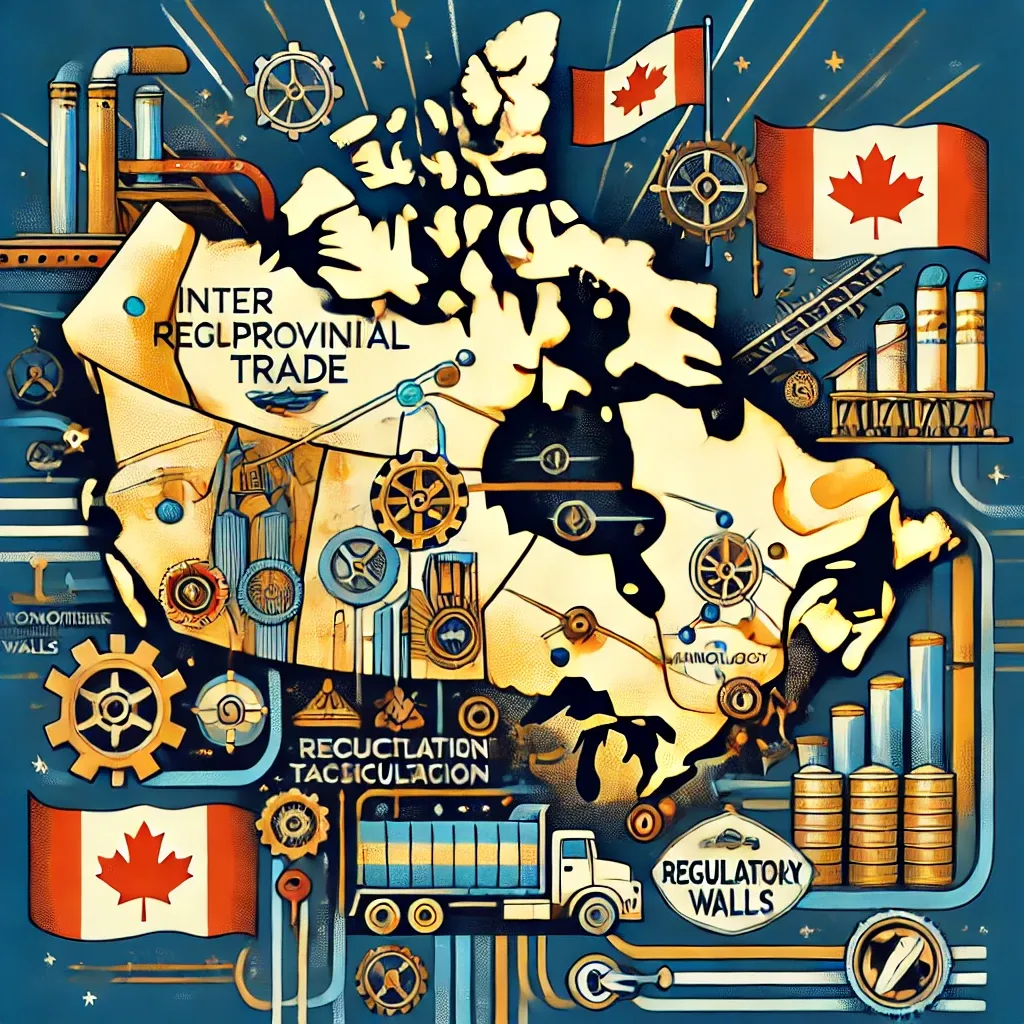
Canada is often praised for its open trade policies on the global stage, yet within its own borders, businesses face significant barriers to interprovincial trade. Despite the Canadian Free Trade Agreement (CFTA) and ongoing efforts to reduce trade barriers, regulatory differences and hidden tariffs continue to hinder economic growth. Addressing these internal trade challenges is crucial for strengthening the Canadian economy, reducing costs for businesses, and fostering regional economic development.
The Hidden Costs of Interprovincial Trade Barriers
While Canada does not impose traditional tariffs between provinces, businesses often encounter regulatory discrepancies, licensing requirements, and logistical inefficiencies that function as de facto tariffs. These barriers include:
- Differing standards and regulations: A product that meets safety or labeling requirements in one province may need modifications to be sold in another.
- Restricted market access: Certain industries face protectionist policies that limit competition across provinces, such as restrictions on alcohol distribution.
- Transportation inefficiencies: Trucking regulations and licensing variations between provinces add complexity and costs to domestic logistics.
These obstacles can drive up prices, limit business expansion, and slow down economic growth. A 2021 study by the Bank of Canada estimated that removing interprovincial trade barriers could boost Canada’s GDP by as much as 4%, a significant increase that would benefit businesses and consumers alike.
The Economic Case for Strengthening Interprovincial Trade
Reducing interprovincial trade barriers would have wide-ranging benefits, including:
1. Lower Costs for Businesses and Consumers
By eliminating redundant regulations and harmonizing standards, businesses can streamline operations and reduce expenses, leading to lower prices for consumers.
2. Greater Business Expansion and Innovation
Companies looking to scale across Canada often face regulatory hurdles that stifle growth. A more seamless trade environment would encourage innovation and expansion, fostering job creation in multiple provinces.
3. Strengthened Supply Chains
With global trade becoming increasingly unpredictable due to tariffs, sanctions, and geopolitical tensions, Canada has an opportunity to strengthen domestic supply chains. Enhancing interprovincial trade would ensure that businesses have reliable access to materials, labor, and distribution networks within the country.
4. Economic Diversification and Regional Growth
Stronger interprovincial trade would allow businesses in resource-rich provinces to expand their customer base beyond their immediate region. It would also help emerging industries, such as clean technology and advanced manufacturing, find new markets within Canada rather than relying solely on exports.
Breaking Down Barriers: Solutions for a Stronger Domestic Market
To fully unlock the benefits of interprovincial trade, governments and businesses must work together to:
- Harmonize standards across provinces: Establishing common regulatory frameworks will allow products and services to move more freely.
- Modernize transportation and logistics policies: Streamlining trucking, rail, and shipping regulations will reduce unnecessary delays and costs.
- Leverage technology for compliance and efficiency: Digital solutions, such as unified licensing platforms, can simplify compliance for businesses operating in multiple provinces.
- Encourage government procurement policies that support interprovincial suppliers: This would incentivize businesses to source materials and services from within Canada.
Conclusion
Canada has a vast and diverse economy, yet internal trade barriers continue to act as an invisible tariff, limiting business opportunities and economic potential. Strengthening interprovincial trade is not just about reducing costs—it is about building a more resilient, competitive, and dynamic economy that benefits all Canadians. By prioritizing regulatory harmonization, optimizing supply chains, and fostering regional trade collaboration, Canada can ensure that its businesses thrive in an increasingly complex global economy.
Now is the time for policymakers and industry leaders to take decisive action to remove trade barriers and unlock the full potential of Canada’s domestic market.
_______________________________________________________
Jenny is a business insurance broker with Waypoint Insurance. She can be reached at 604-317-6755 or jhansen@waypoint.ca. Connect with Jenny on LinkedIn at https://www.linkedin.com/in/jenny-holly-hansen-365b691b/. Connect with Jenny at BlueSky: https://bsky.app/profile/jennyhollyhansen.bsky.social
Jenny Holly Hansen is a cohost with Chris Sturges of the Langley Impact Networking Group. You are welcome to join us on Thursday’s from 4pm to 6pm at: Sidebar Bar and Grill: 100b - 20018 83A Avenue, Langley, BC V2Y 3R4
Tags: #Jenny Holly Hansen #Tariffs #Interprovinical Trade #Canadian Free Trade Agreement (CFTA) # Diverse Economy

